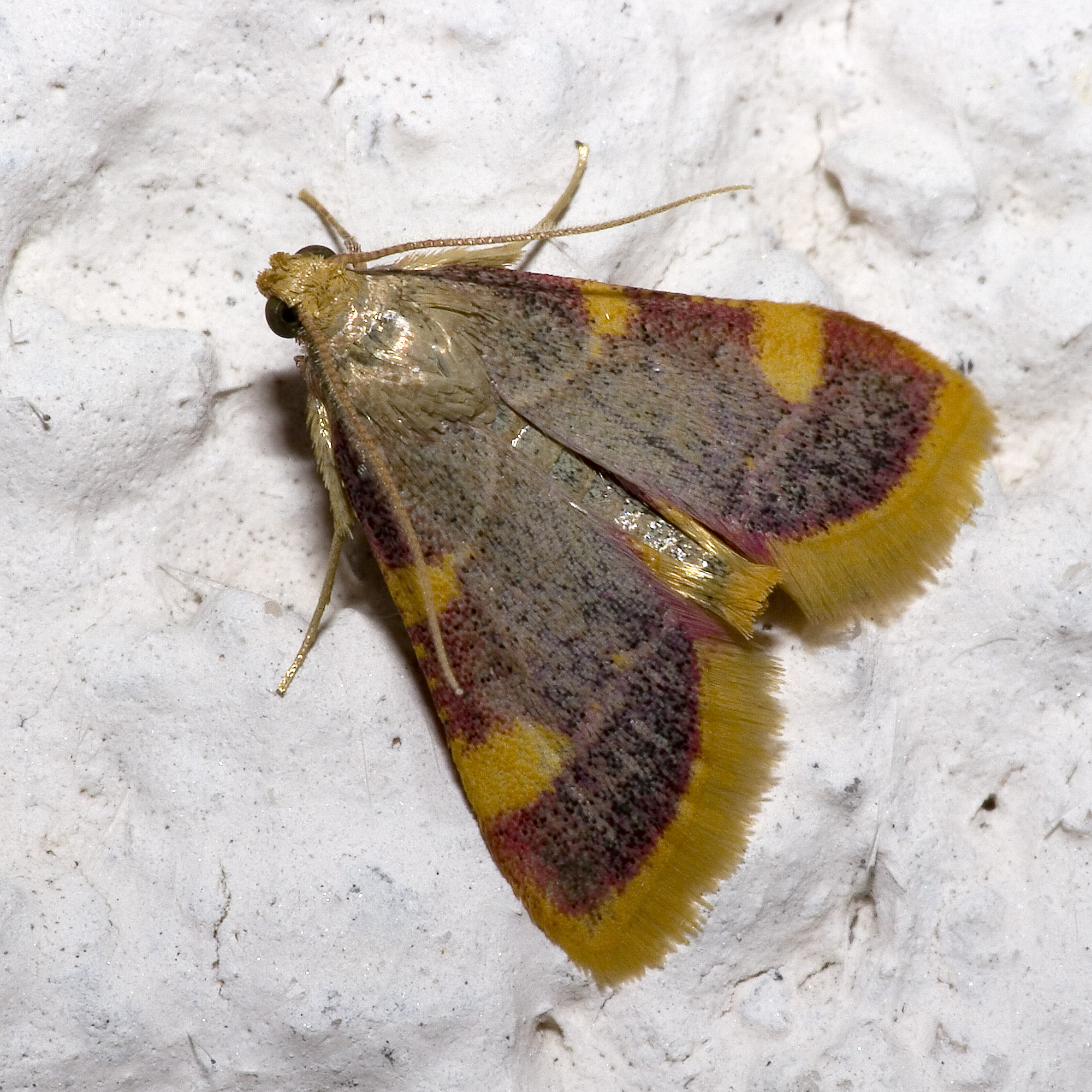|
Curena
''Curena'' is a genus of snout moths. It was described by Francis Walker in 1866. Species * '' Curena caustopa'' * '' Curena costipunctata'' Shibuya, 1928 * '' Curena externalis'' Walker, 8661865 References Pyralini Pyralidae genera {{Pyralini-stub ... [...More Info...] [...Related Items...] OR: [Wikipedia] [Google] [Baidu] |
Curena Caustopa
''Curena caustopa'' is a species of snout moth in the genus ''Curena'' described by Alfred Jefferis Turner in 1905. It is found in Queensland, Australia. The wingspan The wingspan (or just span) of a bird or an airplane is the distance from one wingtip to the other wingtip. For example, the Boeing 777–200 has a wingspan of , and a wandering albatross (''Diomedea exulans'') caught in 1965 had a wingspan of ... is about 10 mm. References Moths described in 1905 Pyralini {{Pyralini-stub ... [...More Info...] [...Related Items...] OR: [Wikipedia] [Google] [Baidu] |
Curena Externalis
''Curena externalis'' is a species of snout moth in the genus ''Curena''. It was described by Francis Walker in 1866. It is found in the Australian states of New South Wales and Queensland ) , nickname = Sunshine State , image_map = Queensland in Australia.svg , map_caption = Location of Queensland in Australia , subdivision_type = Country , subdivision_name = Australia , established_title = Before federation , established_ .... The forewings are pale brown with a dark brown margin. The wings have a recurve in the margin near the tornus. References Moths described in 1866 Pyralini {{Pyralini-stub ... [...More Info...] [...Related Items...] OR: [Wikipedia] [Google] [Baidu] |
Curena Costipunctata
''Curena costipunctata'' is a species of moth of the family Pyralidae. It is found in Taiwan Taiwan, officially the Republic of China (ROC), is a country in East Asia, at the junction of the East and South China Seas in the northwestern Pacific Ocean, with the People's Republic of China (PRC) to the northwest, Japan to the nort .... References Moths described in 1928 Pyralini {{Pyralini-stub ... [...More Info...] [...Related Items...] OR: [Wikipedia] [Google] [Baidu] |
Pyralini
The Pyralini are a tribe of snout moths described by Pierre André Latreille in 1809. They belong to the subfamily Pyralinae, which contains the "typical" snout moths of the Old World and some other regions. The genus list presented here is provisional. They are deemed to represent the lineage around the type species, the meal moth (''Pyralis farinalis''), a somewhat notorious pest of stored cereals and similar goods. Like this species, Pyralini are usually largish snout moths; some are boldly colored (often in bright brown to yellow hues) by standards of their family. Systematics and taxonomy While the Pyralini are a successful radiation even as presently circumscribed, this delimitation is highly provisional. It is very likely that more genera belong here (unknown Pyralinae are still being discovered on a regular basis), and perhaps the group will turn out to be so large or phylogenetically inconsistent that it will be split apart. Pending a detailed analysis, the followi ... [...More Info...] [...Related Items...] OR: [Wikipedia] [Google] [Baidu] |
Francis Walker (entomologist)
Francis Walker (31 July 1809 – 5 October 1874) was an English entomologist. He was born in Southgate, London, on 31 July 1809 and died at Wanstead, England on 5 October 1874. He was one of the most prolific authors in entomology, and stirred controversy during his later life as his publications resulted in a huge number of junior synonyms. However, his assiduous work on the collections of the British Museum had great significance. Between June 1848 and late 1873 Walker was contracted by John Edward Gray Director of the British Museum to catalogue their insects (except Coleoptera) that is Orthoptera, Neuroptera, Hemiptera, Diptera, Lepidoptera and Hymenoptera. Walker largely accomplished this and (Edwards, 1870) wrote of the plan and by implication those who implemented it “It is to him raythat the Public owe the admirable helps to the study of natural history which have been afforded by the series of inventories, guides, and nomenclatures, the publication of which beg ... [...More Info...] [...Related Items...] OR: [Wikipedia] [Google] [Baidu] |
Pyralidae
The Pyralidae, commonly called pyralid moths, snout moths or grass moths, are a family of Lepidoptera in the ditrysian superfamily Pyraloidea. In many (particularly older) classifications, the grass moths (Crambidae) are included in the Pyralidae as a subfamily, making the combined group one of the largest families in the Lepidoptera. The latest review by Eugene G. Munroe and Maria Alma Solis retain the Crambidae as a full family of Pyraloidea. The wingspans for small and medium-sized species are usually between with variable morphological features. It is a diverse group, with more than 6,000 species described worldwide, and more than 600 species in America north of Mexico, comprising the third largest moth family in North America. At least 42 species have been recorded from North Dakota in the subfamilies of Pyralidae. Relationship with humans Most of these small moths are inconspicuous. Many are economically important pests, including waxworms, which are the caterpillar ... [...More Info...] [...Related Items...] OR: [Wikipedia] [Google] [Baidu] |


